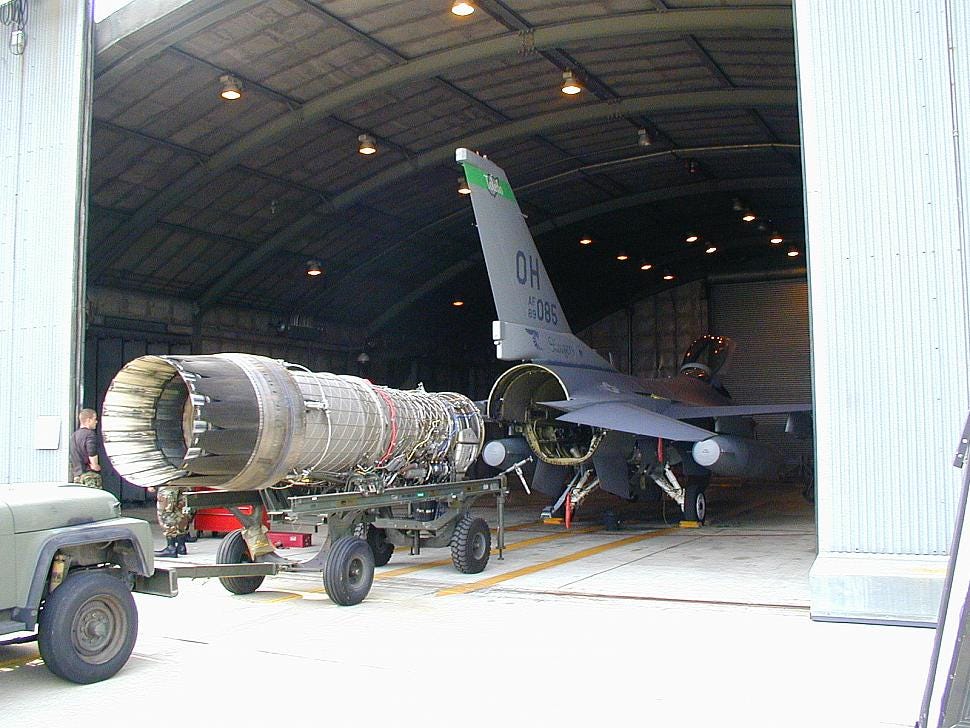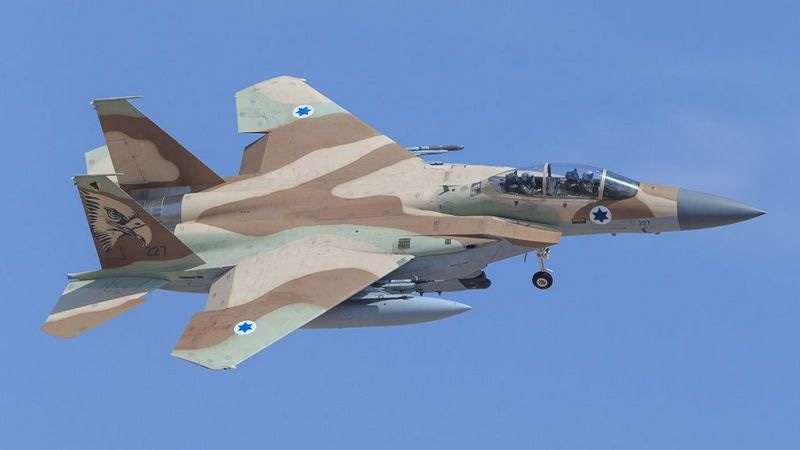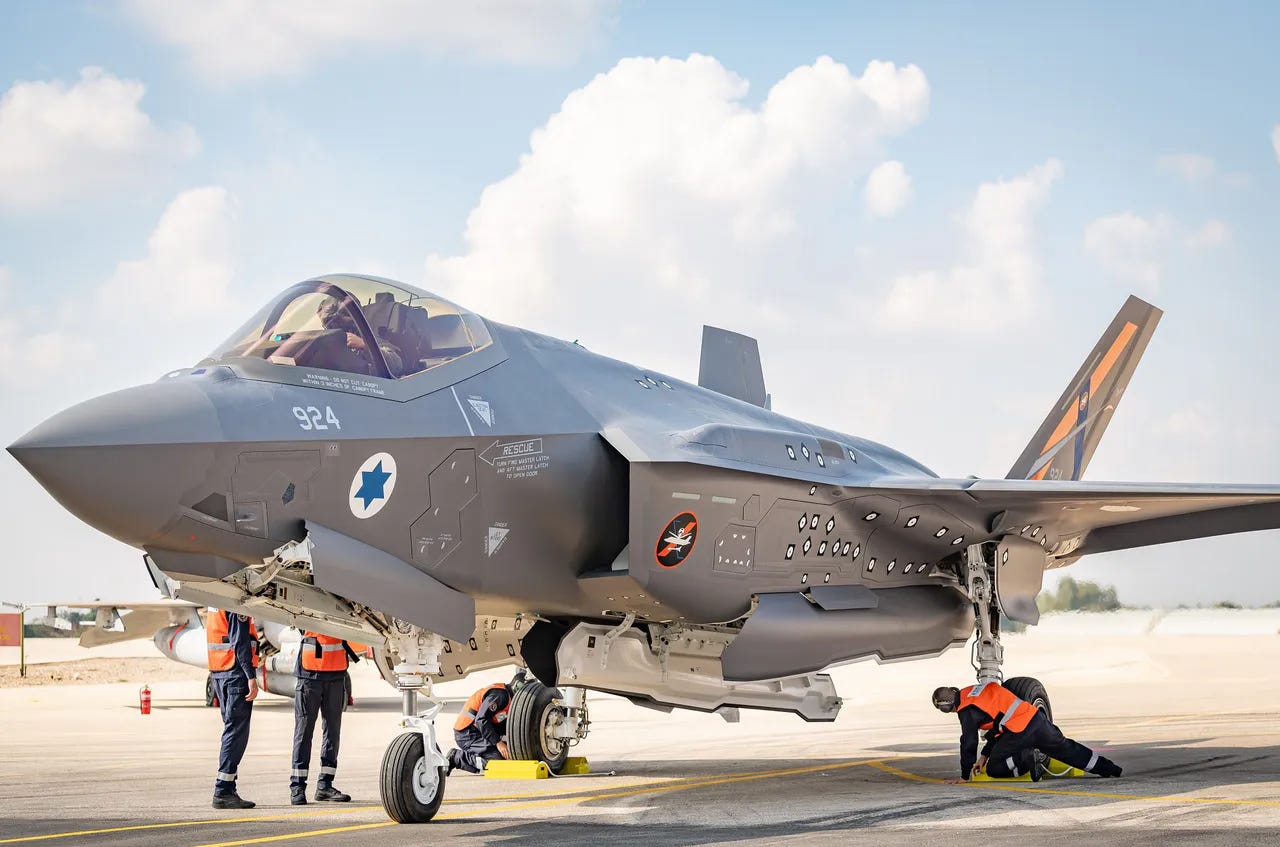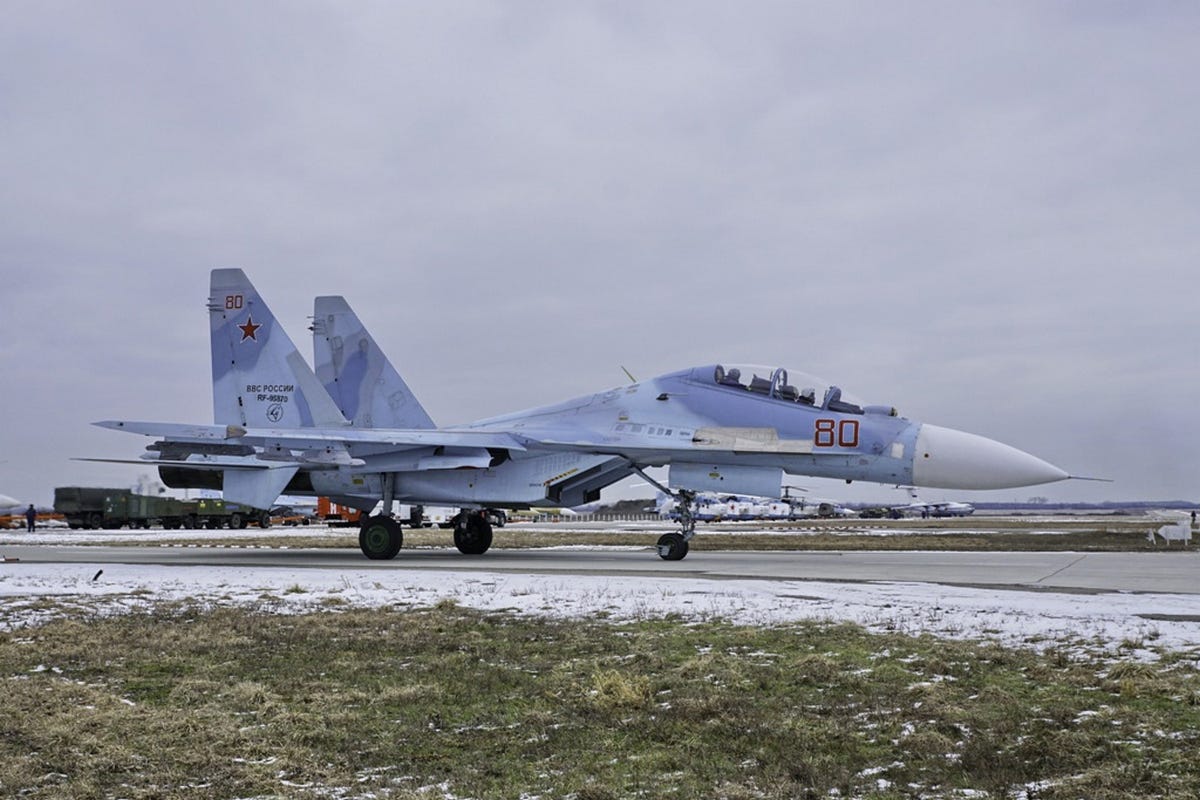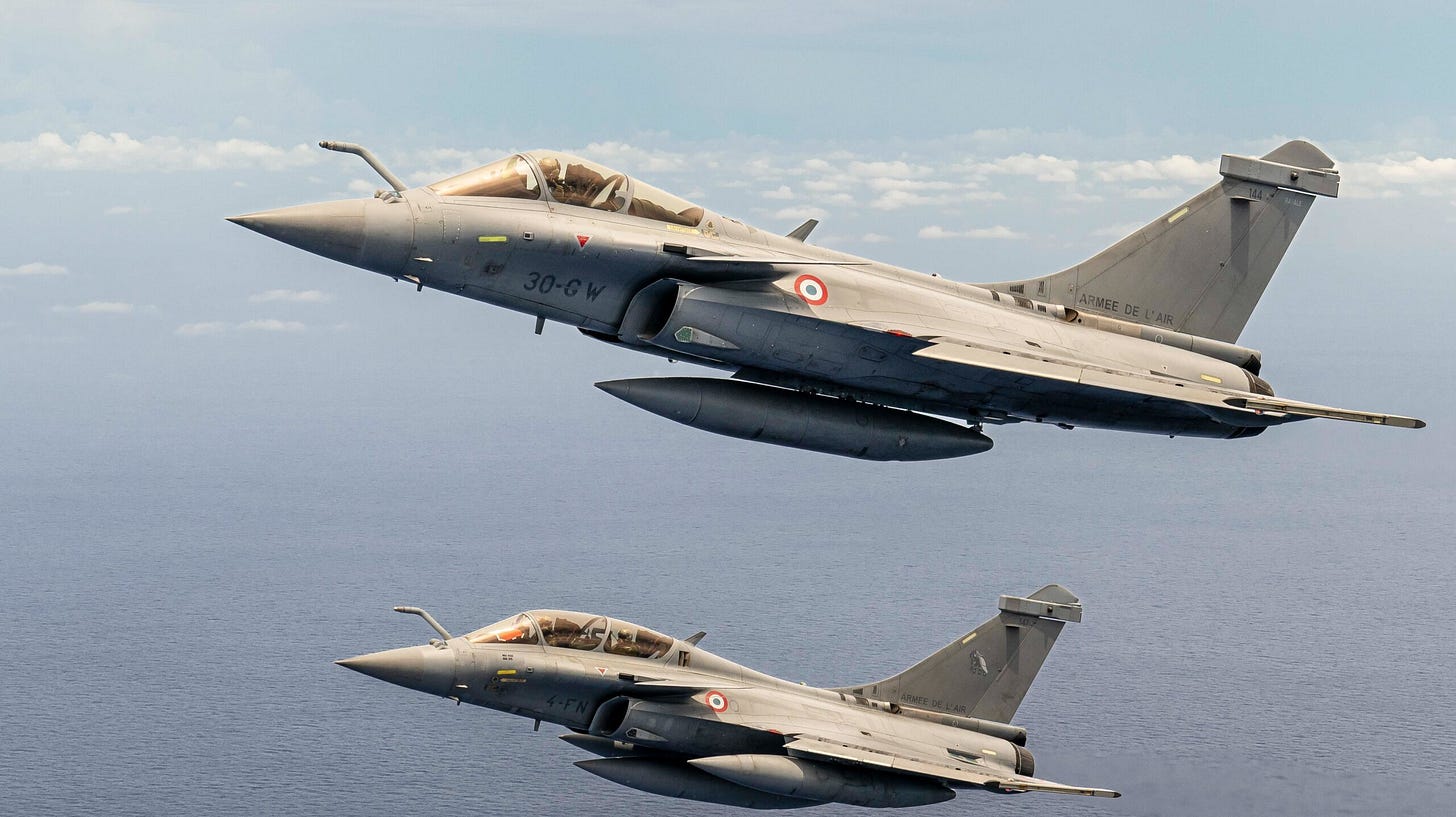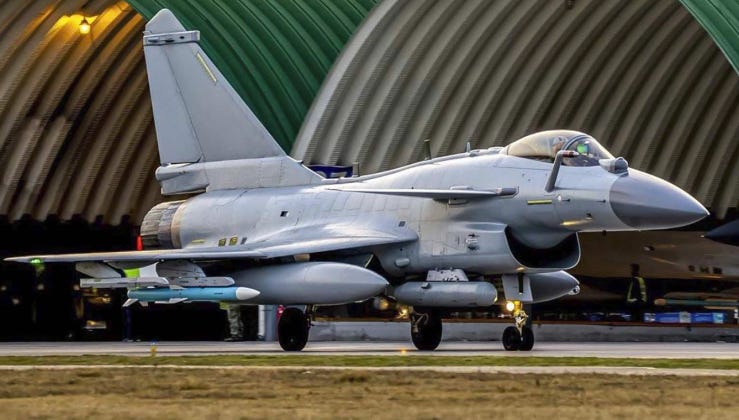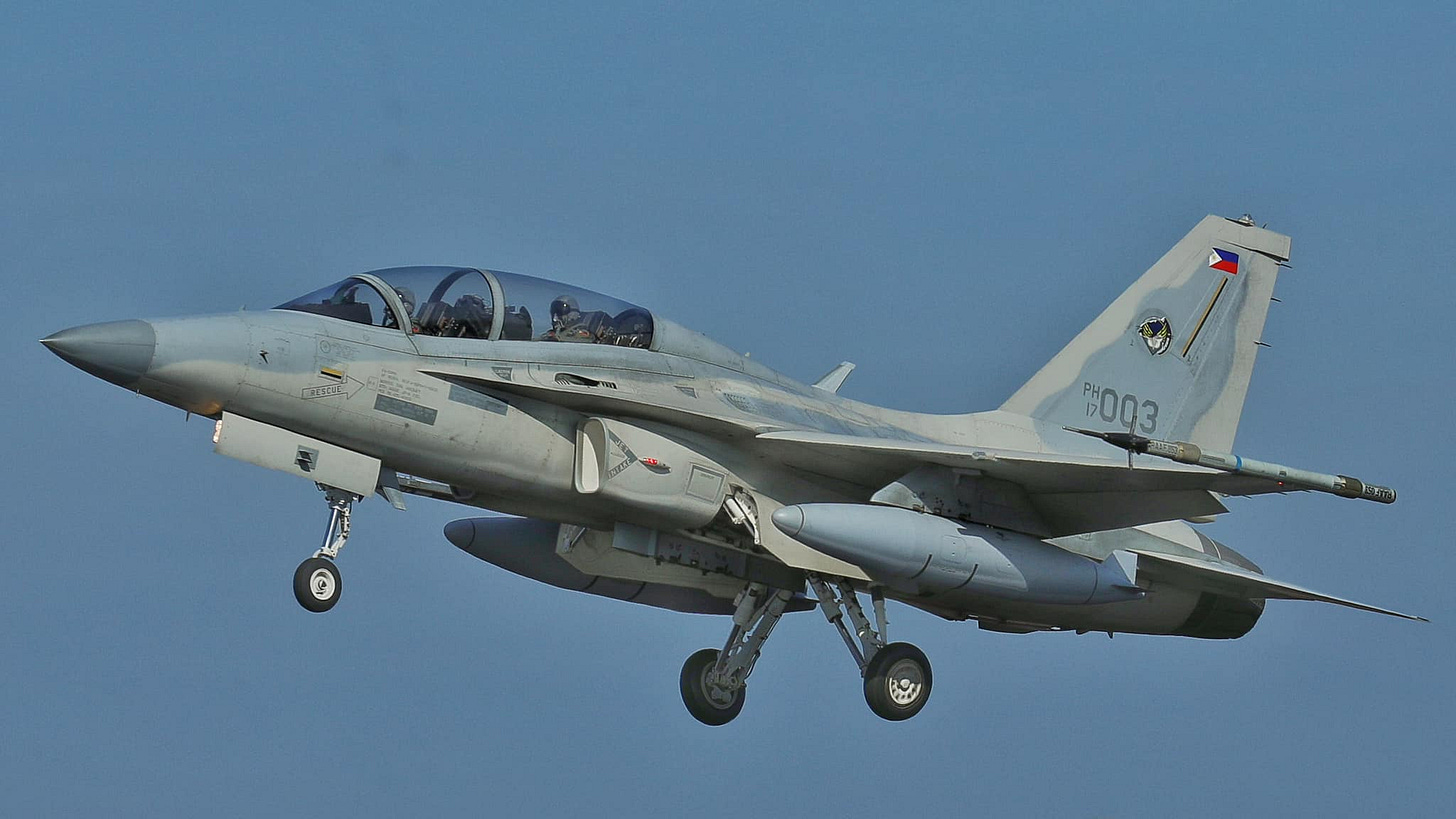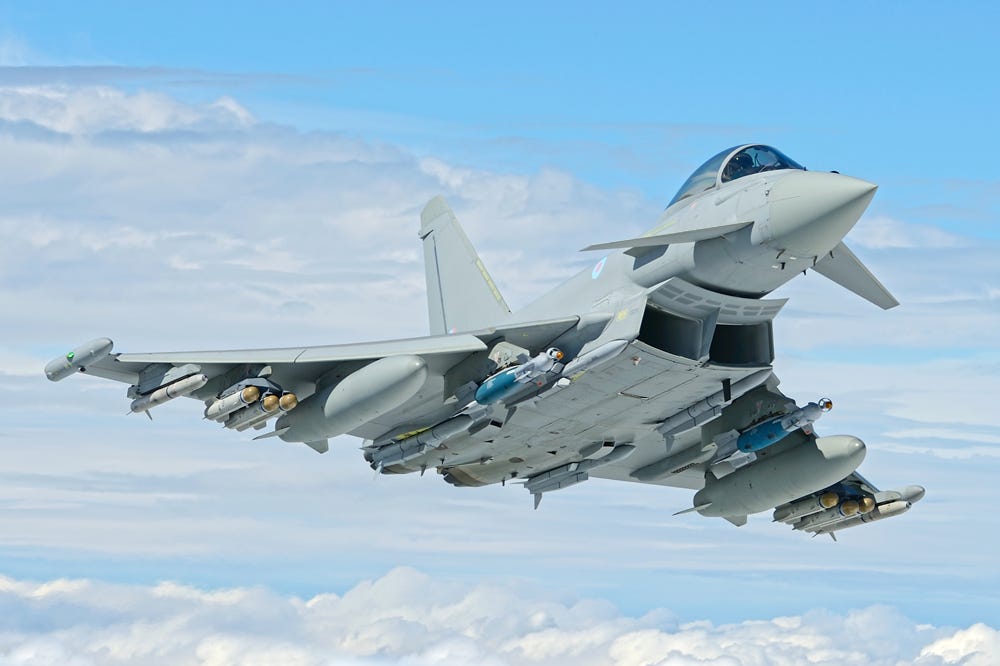The Myth of Israeli Military Independence (Part 2)
Or: How I Learned to Stop Worrying and Love ITAR
Let’s pretend this article isn’t about Israel for a minute.
Imagine you’re a military procurement officer in a small but wealthy Middle Eastern country. You’re responsible for maintaining the nation’s disproportionately large and advanced military well into the future. The pride of your nation’s military is its air force. It is one of the world’s largest and most advanced, featuring hundreds of modern combat aircraft. It is both quantitatively and qualitatively more powerful than any other air force in the region.
There’s one small problem.
All of the planes were made in the United States, and are reliant on American political approval for sale of both new aircraft and the key components necessary for maintenance. There’s two pesky laws that may make purchasing additional American-made planes and components difficult or impossible.
First, the Leahy Law. Your country wants to engage in a variety of gross violations of human rights and flagrantly violate international humanitarian law. Unfortunately for you, this means it is illegal for the United States to provide you with military assistance, including the weapons (or components of weapons, such as replacement aircraft engines and other elements necessary to maintain your air force) you’d like to buy.
Second, the International Traffic in Arms Regulations (ITAR). This is a broad set of laws that basically say that the U.S. Department of State has to authorize the transfer of U.S.-made military equipment to non-U.S. countries or individuals. This includes the re-export of U.S.-made equipment. So, for example, not only would the Department of State have to sign off on your purchase of new Pratt & Whitney F-100-PW-229 jet engines for your fleet of F-16 Block 52+ jet fighters, it would also have to sign off on other countries that possess such an engine for their own F-16 fighter jets (such as South Korea) from selling their used engines to you.
Image: An F-16 fighter jet has its engine replaced.
Jet engines need to be repaired, overhauled, or replaced entirely after being heavily used. This will require a constant stream of spare parts or brand new engines being purchased and delivered in order to keep your air force in the air and committing the aforementioned gross violations of human rights. Ditto for other key components to keep your planes flying and bombing— radars, electronic components, landing gear tires, etc. All require maintenance and replacement after heavy use.
Even the richest and most advanced countries struggle to keep all their planes in the air (or available to go into the air if needed). For example, the U.S. Air Force— easily the largest and most advanced air force in the world— has, at best, a 70% mission readiness rate. This means that, at any given moment, about 70% of its planes are available to take part in combat missions. The other 30% are undergoing extensive repair or refurbishment and thus cannot fly. Poorer countries, or countries that don’t manufacture their own aircraft or aircraft components, will inevitably have even lower mission readiness rates.
So here’s your conundrum: you have an air force that consists entirely of U.S.-made aircraft, using U.S.-made critical components. Maintaining this air force is of the utmost importance to continue your foreign policy of bombing every ambulance within a thousand miles.
And yet a new President just came into power in the U.S., and they have announced their intention to follow existing U.S. law, thus making it illegal to continue the sale of U.S.-made military components to your country AND also ensuring that other countries cannot sell U.S.-made military equipment to your country without getting approval from the U.S. The new State Department has made clear they will not get that permission.
Image: the President of the United States of America (yes I know he can’t legally be President…yet)
Your air force will continue to operate its U.S.-made aircraft until it is impossible to do so, through cannibalizing worn-down aircraft for spare parts to keep a rapidly diminishing fleet of aircraft active. This will keep you going for a few years at best, but will create an immediate and growing bottleneck on your ability to generate flight hours (and thus bombs on civilian targets).
In the meantime, it is now your job as Chief Procurement Officer to fully replace your nation’s U.S.-reliant air force with something else.
Image: You, now
Your immediate reaction is petulant spite: we will simply build our own aircraft! We’ve done it before! Well, it turns out we stopped doing that because it was way too expensive to keep up, and previous successful indigenous aircraft production required extensive technical cooperation from the French and Americans, and required an American designed and license-produced engine. That was also in an era where military aircraft were significantly less sophisticated and far, far cheaper.
You look at estimated costs for carrying out entirely native research, prototyping, and production of a sophisticated combat aircraft on par with the best from America and the rest of the world. Words like “trillion” start to haunt your dreams. Ok, fine. Maybe not that advanced. Let’s go down a level. Tens of billions of dollars, plus decades of development before the first plane rolls of the production line. That’s not going to work. You might have to bomb a hospital in a neighboring country during that time period!
Ok, fine. You’ll have to shop around. Before you do that, let’s look at what you’re going to have to replace.
Your air force has approximately 300 American-made planes capable of combat (combat in your nation’s case primarily means dropping bombs on children and humanitarian aid workers).
Of those 300, approximately 150 are of the previously mentioned F-16 type. These are relatively lightweight, cheap fighter jets that have a single engine. They are maneuverable and can carry out a wide variety of missions, but are limited by only having one engine and thus can carry fewer weapons and have a shorter range. This aircraft is often described as “4th generation,” which mostly means it is an updated version of a plane originally designed in the 1970s. It has no stealth features, and is probably nearing the end of its ability to be upgraded to stay relevant in the modern age.
Image: Your nation’s upgraded F-16 fighter jet.
You also have about 100 F-15 fighter jets. These are large, heavy, long-range jets with two engines. They are also “4th generation” but due to having two engines, can generate enough electrical power and have the size to include new upgrades to keep them relevant for a little while longer (which primarily means newer electronic sensors, which require lots of electrical power), making them arguably “4.5th generation.”
Image: Your nation’s upgraded F-15 fighter jet.
And last but not least, the pride of your fleet, you have about 50 of the 5th generation stealth F-35 jet. Now, “stealth” in the context of planes means, at its most basic, that it is a lot harder for your enemies to identify and track stealth planes via radar. They are still totally visible to the naked eye, but ideally you can identify, track, and shoot at enemy planes well before they are visible. It’s a cat and mouse game, where the F-35 and equivalent stealth aircraft are capable of getting close enough to launch various weapons at the enemy’s children and humanitarian aid workers before their military’s radars can identify what’s going on.
Now, it’s more complicated than that, but what matters is that “stealth” means that enemy radars are far less likely to see you coming. “5th Generation” in this context primarily means the aircraft is a stealth aircraft with a variety of other advanced sensors, electronics, radar, etc. But it’s the stealth that’s most important.
Image: Your nation’s F-35 stealth jet.
So your job as Chief Procurement Officer is to replace, either directly or in aggregate, the capabilities of the above.
Image: You, imagining yourself with the looks and charisma of Brad Pitt. Don’t kid yourself.
Let’s look at the state of the world market for modern combat aircraft. The more you look, the more crestfallen you become. The market is very limited.
As it turns out, there are only a handful of countries that produce aircraft that could ensure your nation has an air force capable of projecting power in the way that you would like.
There’s the United States, of course, but that’s already off the table.
There’s Russia— the traditional source of aircraft for countries that lack the favor of the Americans. They have (in theory) three aircraft on offer that could meet your needs. All made by the aerospace firm Sukhoi— the Su-35, Su-30 (you’d probably want a variant of the new Su-30MK+ versions exported widely), and the Su-57.
Image: Russian-made Su-30 fighter jet variant.
The Su-57 is Russia’s first and (for now) only entry into the 5th generation stealth game, but only a handful have ever been produced and it has yet to have any confirmed foreign buyers— casting doubt on whether its anything more than a vanity project to prove Russia can produce a 5th generation aircraft.
These Sukhoi jets would serve as a more-than-adequate replacement for your F-16s and F-15s (and you’ll just have to gamble on the Su-57 being capable of replacing your F-35s), but there’s one really big issue. Russia cannot really deliver them on any reasonable timetable, because Russia is currently engaged in a war of aggression against its neighbor that sucks up all of its major defense industry, including the aircraft factory production lines at Sukhoi. You could sign a deal with the Russians, but God only knows when or even if you’ll ever receive delivery of the aircraft.
Ok, it can’t be Russia. Who else? Well, France is another of the aviation giants— and they’ve had a history of selling their military products to countries not typically favored by the U.S. and broader Western military alliance. The French company Dassault produces the Rafale multi-role fighter jet, and advertises it as a “4.5++ generation” aircraft. It’s not stealth, but all the fancy electronic doodads and sensors make it almost as good, according to the marketing copy. It would be a more than adequate replacement for your F-16s and F-15s, and you’ll just have to suck up the fact that you lose stealth capabilities.
Image: The French-made Rafale fighter jet.
You could theoretically place an order for up to 300 of these aircraft. It’s entirely produced in France, there’s no ITAR issues, and let’s just say the French government is amenable to the deal. After all, it would make them as much as $45 billion in cold hard cash.
Wait a minute. $45 billion? That’s equivalent to the entirety of what your nation spent on defense in the year 2024, which included massive spending increases on several wars (and may or may not include money given, donated, or otherwise covered by the United States). Even breaking up the purchase over numerous tranches over many years would represent a massive expenditure.
There is another problem here—let’s pretend your nation has given you a blank check. Your nation is willing to bankrupt itself in order to replace its American-made airplanes. However, the lazy Frenchies at Dassault are saying they can maybe ramp up total production of Rafale aircraft to four aircraft per month. In fact, they produced just 13 aircraft in the entire year of 2023. There’s an existing backlog of ordered aircraft of over 200 ordered-but-not-built aircraft! So place your order, sure, but get in line behind the French Air Force, the Indians, the Greeks, the Indonesians, the Serbians, the Qataris, the Emiratis, and the Egyptians.
Yes, another little issue— you will be operating the same aircraft as some of the countries whose children, women, and aid workers you might want to bomb in the near future. You won’t have a technical edge over them.
So who else? Where else can a country in the year 2025 acquire advanced combat aircraft? Shockingly, you discover the only other answer is China. And realistically, there’s two options from the Chinese— the J-10C and JF-17. The JF-17 is going to be immediately ruled out, as it is co-produced with Pakistan, who would certainly not approve the sale. So, that leaves the J-10C.
Image: The Chinese J-10C jet aircraft.
The J-10C is, by all accounts, a very capable aircraft and is now combat-proven in Pakistani service. In fact, it allegedly bested and shot down at least one of the other aircraft on this list in Indian service, the Rafale. Production numbers aren’t known, but the Chinese have demonstrated that they can produce these aircraft at an acceptable rate. It’s also not even that expensive, at least relative to the French jets. Perfect!
Of course, this is a single-engine “4.5th generation” aircraft. It does not serve as a replacement for the two-engine F-15 or the “5th generation” stealth F-35. It also operates exclusively with Chinese-made weapons and sensors, which means all existing stock of American-made missiles, bombs, and so on will need to be either tossed out or (expensively) re-furbished to be compatible with the J-10C’s systems. This may not even be possible at all, which means expensive purchases from China for all of those weapons and such will need to be made in addition to the aircraft.
In short, this would be the largest and highest profile purchase of a Chinese military product in history, and would thus need sign-off at the highest levels of the Chinese government. China has recently condemned your nation’s attack on another country in the region and has generally been reticent to sell such high-profile and prestigious weapons systems to countries it doesn’t have much influence in. This is not going to be an easy task.
Who, who on Earth will let us buy billions and billions of dollars of their weapons without making us stop killing all those kids? This is so unfair!
Desperate, you research other aircraft on the market.
There’s the South Korean T-50 light fighter. Sure, its capabilities don’t stack up against any of the other aircraft on this list, but it is better than nothing. But, god-damnit, its engine is Made in USA and thus subject to ITAR.
Image: The Korean T-50 light jet.
There’s the Swedish Saab Gripen. It’s also a single-engine “4.5th generation” fighter roughly equivalent to the J-10C or F-16. But, Jesus Christ, it also uses a license-produced American engine and is thus subject to ITAR.
Image: The Swedish Gripen jet.
Do the British make anything? They used to be an aviation superpower, with iconic planes. But alas, they’ve accidentally annihilated their own military industry through austerity policies, and no longer produce their own aircraft.
There’s the EuroFighter Typhoon aircraft, which is about equivalent to the Rafale or F-15 in capability. It is a joint production of several European countries, and has extremely limited production similar to the Rafale and is wildly expensive. And, blast, has American-made components and is thus subject to ITAR, in addition to requiring approval from every Eurocrat guy named Vleet van der Poompf in a political environment in which European nations are increasingly skeptical of arms sales to your nation.
Image: EU bureaucrat Vleet van der Poompf reviewing the sale of Eurofighter Typhoon aircraft to Your Nation. He’s about to close the folder marked “Your Nation’s Documented War Crimes,” sigh, look at you, and say “We hebben een serieus probleem.”
Image: The EuroFighter Typhoon jet aircraft. Vleet says you can’t have them.
So what is Your Nation supposed to do? Acquiring an air force of the quantity and quality you want internally would require a massive, decades-long investment that would be of questionable affordability and success. Buying the aircraft you want would require *shudder* following international humanitarian law and not launching wars of aggression against your neighbors or being credibly accused of genocide.
In short, the new American President, through simply ordering his State Department to follow existing U.S. law, has immediately neutered your air force and fundamentally removed your nation’s ability to maintain a decisive qualitative and quantitative military edge over every other country in the region. The new American President has forced your nation to face, for the first time ever, consequences for your nation’s internal and external policies.
Image: Your nation’s leader realizing he can no longer simultaneously bomb Gaza, Lebanon, Syria, Iran, and Yemen and might have to resort to diplomacy to resolve your nation’s problems.
The horror!





